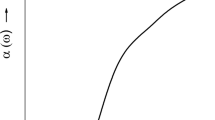Abstract
The vibronic properties of semiconductor structures based on non-metal naphthalocyanine molecules are studied using IR and Raman spectroscopy methods. New absorption lines in the transmission spectra of such materials are detected and identified. Three transmission lines are observed in the range 2830—3028 cm−1, which characterize carbon-hydrogen bonds of peripheral molecular groups. Their spectral positions are 2959, 2906, and 2866 cm−1. It is detected that the phthalocyanine ring can also exhibit its specific vibronic properties in the Raman spectra at 767, 717, and 679 cm−1. The naphthalocyanine molecule in the organic dielectric matrix of microfibers is described using IR spectroscopy. It is shown that the set of vibrations characterizing the isoindol group, pyrrole ring, naphtha group, and C-H bonds, allows an accurate enough description of the vibronic states of the naphthalocyanine complex in complex heterostructures to be made. The spectral range with fundamental modes, characterizing a naphthalocyanine semiconductor in a heterostructure, is 600–1600 cm−1. A comparison of the compositions of complex systems with a similar heterostructure containing lutetium diphthalocyanine demonstrated few errors.
Similar content being viewed by others
References
L. Donaldson, Mater. Today 13, 8 (2010).
L. Donaldson, Mater. Today 13, 9 (2010).
J. Agbenyega, Mater. Today 13, 13 (2010).
Ch. Pool and F. Owens, Nanotechnologies (Tekhnosfera, Moscow, 2006; Wiley, Hoboken, NJ, 2003).
J. Agbenyega, Mater. Today 13, 10b (2010).
Yu. Al’tman, Military Nanotechnologies: Potential Applications and Preventive Arms Control (Tekhnosfera, Moscow, 2008) [in Russian].
J. Paterson, M. M. Martino, and J. A. Hubbell, Mater. Today 13, 14 (2010).
L. Donaldson, Mater. Today 13, 10 (2010).
D. D. Diaz, H. J. Bolink, L. Cappelli, C. G. Claessens, E. Coronado, and T. Torres, Tetrahedron Lett. 18, 4657 (2007).
N. B. McKeown, Phthalocyanine Materials. Synthesis, Structure and Function (Cambridge Univ. Press, Cambridge, 1998).
L. Cao, H.-Z. Chen, H.-B. Zhou, L. Zhu, J.-Z. Sun, X.-B. Zhang, J.-M. Xu, and M. Wang, Adv. Mater. 15, 909 (2003).
W. Feng, Y. Li, Y. Feng, and J. Wu, Nanotechnology 17, 3274 (2006).
P. A. Firey, W. E. Michael, and A. J. Rodgers, J. Am. Chem. Soc. 110, 7626 (1988).
S. Hayashida and N. Hayashi, Chem. Mater. 3, 92 (1991).
R. T. Kuznetsova, N. S. Savenkova, G. V. Maier, S. M. Arabei, T. A. Pavich, and K. N. Solov’ev, J. Appl. Spectrosc. 74, 485 (2007).
I. A. Belogorokhov, M. N. Martyshov, D. A. Mamichev, M. A. Dronov, V. E. Pushkarev, Yu. V. Ryabchikov, P. A. Forsh, L. G. Tomilova, and D. R. Khokhlov, Semiconductors 44, 766 (2010).
I. A. Belogorokhov, E. V. Tikhonov, M. O. Breusova, V. E. Pushkarev, L. G. Tomilova, and D. R. Khokhlov, Semiconductors 41, 1204 (2007).
A. V. Ziminov, S. M. Ramsh, E. I. Terukov, I. N. Trapeznikova, V. V. Shamanin, and T. A. Yurre, Semiconductors 40, 1131 (2006).
F. Lu, Q. Cui, and X. Yan, Spectrochim. Acta A 65, 221 (2006).
M. Bao, R. Wang, L. Rintoul, D. P. Arnold, and J. Jiang, Vibrat. Spectrosc. 40, 47 (2006).
X. Sun, L. Rintoul, Y. Bian, D. P. Arnold, R. Wang, and J. Jiang, J. Raman. Spectrosc. 34, 306 (2003).
F. Lu, L. Rintoul, X. Sun, D. P. Arnold, X. Zhang, and J. Jiang, J. Raman. Spectrosc. 35, 860 (2004).
Author information
Authors and Affiliations
Corresponding author
Additional information
Original Russian Text © I.A. Belogorokhov, E.V. Tikhonov, M.A. Dronov, L.I. Belogorokhova, Yu.V. Ryabchikov, L.G. Tomilova, D.R. Khokhlov, 2012, published in Fizika i Tekhnika Poluprovodnikov, 2012, Vol. 46, No. 1, pp. 103–108.
Rights and permissions
About this article
Cite this article
Belogorokhov, I.A., Tikhonov, E.V., Dronov, M.A. et al. Vibronic states in organic semiconductors based on non-metal naphthalocyanine. Detection of heterocyclic phthalocyanine compounds in a flexible dielectric matrix. Semiconductors 46, 99–104 (2012). https://doi.org/10.1134/S1063782612010046
Received:
Accepted:
Published:
Issue Date:
DOI: https://doi.org/10.1134/S1063782612010046




